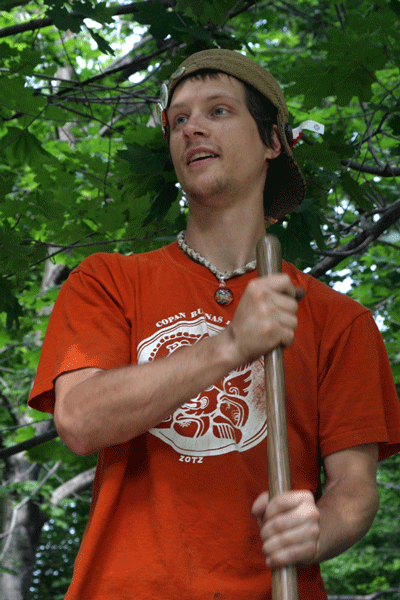Week 3
Hello everyone in Internet land my name is David Nelson, I am currently working with Michigan Tech in excavating the West Point Foundry in Cold Spring. As a student of Michigan Tech, I have been working with some of the artifacts from the foundry since I was a freshman at MTU and since coming to Cold Spring I can finally put a face to the site instead of looking at pictures in books or reports. I will be a senior in the upcoming academic year and since a field school is required for graduation, I figured why not come to the one that my school runs. I know the professors from class and have met some of the grad students that have worked at the foundry during my time at MTU.
Since this is the third week of the field season, work is in full swing. The open house is coming up this week we will all be diligently working to provide an interesting site for all that come and visit. The open house by the way is June 14th and 15th and more info can be found at the home page of this site. Since this is my first archaeological excavation, I have learned various things that have to be done in the field. Learning how to map using techniques like pace and compass have now been transformed to using a Total Station, an instrument that allows us as archaeologists to map at a very accurate and fast manner. The mapping is a continual process of the excavation process with every new feature uncovered being mapped. The process is slow at times but it helps the team better understand what is happening on the ground and allows us to look at the bigger picture. Mapping is occurring mainly at the domestic property but when need be, it is also done in the foundry area.
The domestic property we are investigating near the foundry has had two excavations opened up as well as a large test trench dug to help better understand the property and the functions of certain areas of land. The project at the domestic property is being run by Megan, one of the graduate students working on her thesis. There have been interesting discoveries at this site with the excavations as well as archival research. The trench contained various artifacts, mainly coal, pottery, and glass, but there was an uncovering of a small, broken, ceramic figurine which features a small child hugging a boot.
In the foundry area excavation continued in both the North Room extension and in the North West corner of the wheel pit. The foundry area excavations are being supervised by Dan a recent graduate of Michigan Tech's Industrial Archaeology program. The excavation in the North room uncovered a large machine mount, this consisted of a large bolt sticking out of a granite slab, interestingly enough the granite slab had iron concretion on each side of the slab, but where the machine was probably located was void of any iron. The machine mount was adjacent to a small pit, 6 inches x 10 inches, this pit would also be a reason for opening a new excavation unit next to this small pit. This “pit” ended up extending for two feet until in went under a large amount of iron concretion, how far the void goes is quite unknown since it was a small opening and arms can only reach so far. Chris, one of the incoming graduate students has suggested that it may be part of a larger drainage system that could have existed in the Boring Mill. This was concluded after further investigation of a same type of opening in an excavation unit next to the new one, which had a similar type of void that ran perpendicular to the newly uncovered one.
Though the weather was quite beautiful during the entire week excavation got rained out on last Wednesday. This opportunity allowed the team to go up to West Point Military Academy and view the museum. After this field trip we returned to the site to receive a lecture on bricks by Dr. Tim which was quite informative and allowed us to identify some of the different types of bricks on the foundry site. We also were joined this week by two volunteers: Rob Yasinsac and Arron Kotlensky, a graduate of the Michigan Tech program. The upcoming weeks will be a dash to the finish with only 3 weeks remaining.

Dave, the author is learning the skill of excavation with a shovel.



